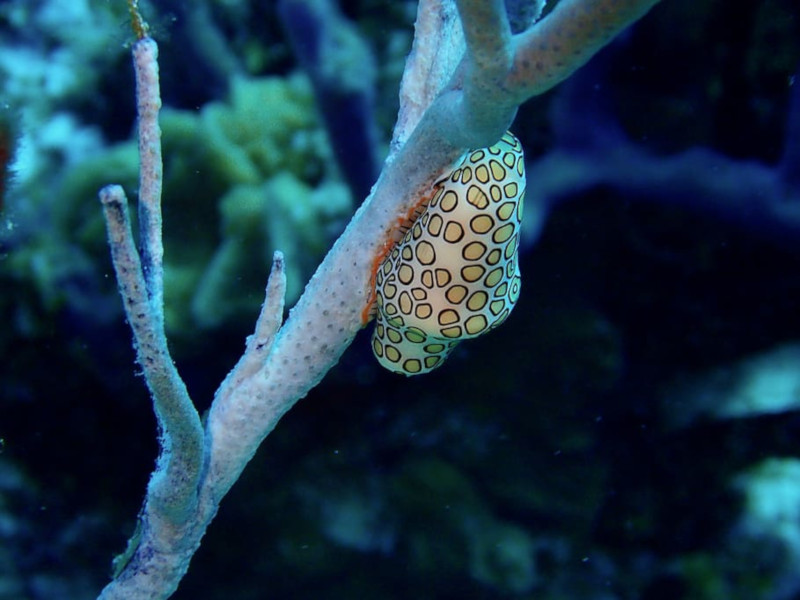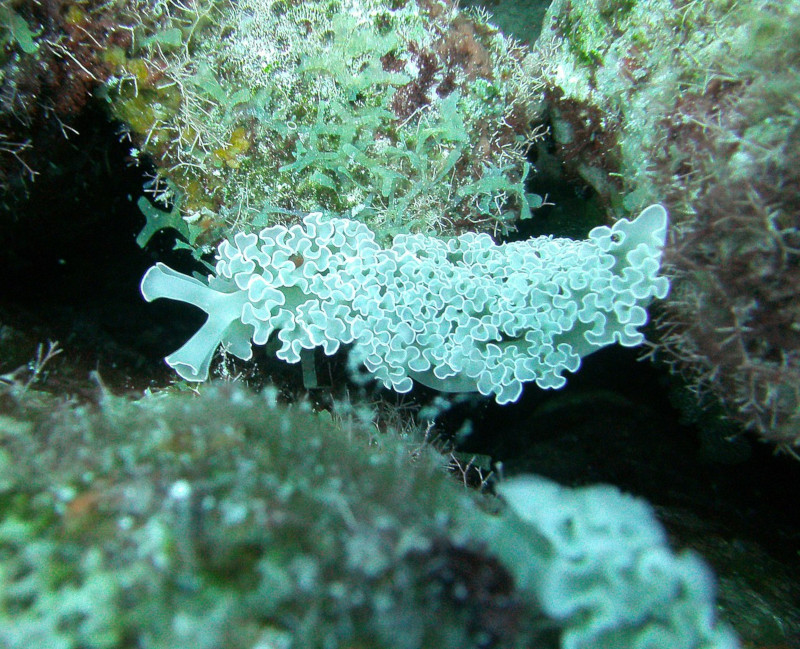Lettuce Sea Slug Facts
- The humorous term of Lettuce Sea Slug refers to a specific, and visually distinctive, marine gastropod mollusk. That common name’s easier to pronounce than its scientific counterpart, though. Its technical name’s the comparatively easy Elysia crispata.
- It’s also borne many other, earlier names. The Swedish biologist, Otto Andreas Lowson Mörch, specifically a malacologist, made the first known formal recognition of it. This first acknowledgment of the creature as a distinct species occurred in 1863.
- Its slightly amusing common name understandably derives from its remarkable physical appearance. Though it closely resembles a nudibranch, it’s something different. It’s technically classified as a sacoglossan, a somewhat distant relative.
- For the moment, the IUCN has no listing for the awesome Lettuce Sea Slug. Any such listing would appear on the organizations’ Red List of Threatened Species. This fortunate situation occurs partly due to its range of distribution, among other factors.
- The remarkable creature nevertheless faces the same threats as virtually all species on earth. Habitat loss naturally ranks as one such potential threat. Its greatest danger, however, no doubt comes from another source. That’s the peril of climate change.
Related Articles



Lettuce Sea Slug Physical Description
Though it easily impresses those who view it, the fabulous Lettuce Sea Slug does not do so due to sheer size. That’s because it’s a relatively diminutive variety. Being hermaphroditic in nature, the principle of sexual dimorphism doesn’t apply to the creature, though.
An exceptional size for mature individuals, however, equals roughly 2 in (5 cm). A larger-than-average body width for adult specimens, meanwhile, only measures about 1.2 in (3 cm). As a general principle, though, most individuals remain much smaller than this.
The most notable physical attribute of the fascinating Lettuce Sea Slug remains obvious. That’s the intricate protrusions covering its body, known as parapodia. These create the impression, to many, that the creature possesses an external covering of lettuce.
These further extend that comparison due to the most commonly displayed color, that of light green. These sometimes vary in color, however. In point of fact, these sometimes include shades of pale white or blue. Faint yellow or red lines also occasionally manifest.
- Kingdom: Animalia
- Phylum: Mollusca
- Class: Gastropoda
- Order: Sacoglossa
- Family: Elysiidae
- Genus: Elysia
- Species: E. crispata
Lettuce Sea Slug Distribution, Habitat, and Ecology
The gorgeous and unique Lettuce Sea Slug inhabits a comparatively wide section of the marine regions of the world. Sadly, though, that’s still a fairly small rang, compared to the size of the world’s waters. It lives in the tropical parts of the Caribbean and Western Atlantic.
More precisely, that zone of habitation extends from the area around Bermuda, to the Florida Keys, in the United States, in North America. Even there, though, its range remains further limited. That’s true since it only lives near coastal and tropical reefs.
This specific environment’s where it makes its home almost exclusively. It further does so at extremely shallow depths. The vast majority of individuals, in fact, appear at depths of between 1.6 – 39.4 ft (0.5 – 12 m). It also needs the water to be clear.
This amazing creation of Nature and evolution further has a highly specialized diet. It evolved as what’s known as a herbivorous suctorial feeder. This means that it consumes the sap of certain algae, usually green. It does not, however, digest all parts of it.
The hermaphroditic Lettuce Sea Slug is also highly prolific in nature. Most of its relatives lay between 30 – 500 eggs after mating. This species, however, lays an average of 1,020 eggs with each clutch. This provides it with a definite evolutionary advantage.
Beyond this data, researchers know very little about the remarkable Lettuce Sea Slug. That lamentable lack of information extends to such aspects as its predators and its role in the local ecosystem. Even its precise lifespan remains undetermined at this time.
Species Sharing Its Range


West Indian Manatee

Check out our other articles on 4 Herbaceous Plants of Virginia, Pesquet’s Parrot, McMurdo Dry Valleys, Mandrinette, Red-Shanked douc, Red-Tailed Bumblebee, Spinetail mobula, Mata mata












Leave a Reply